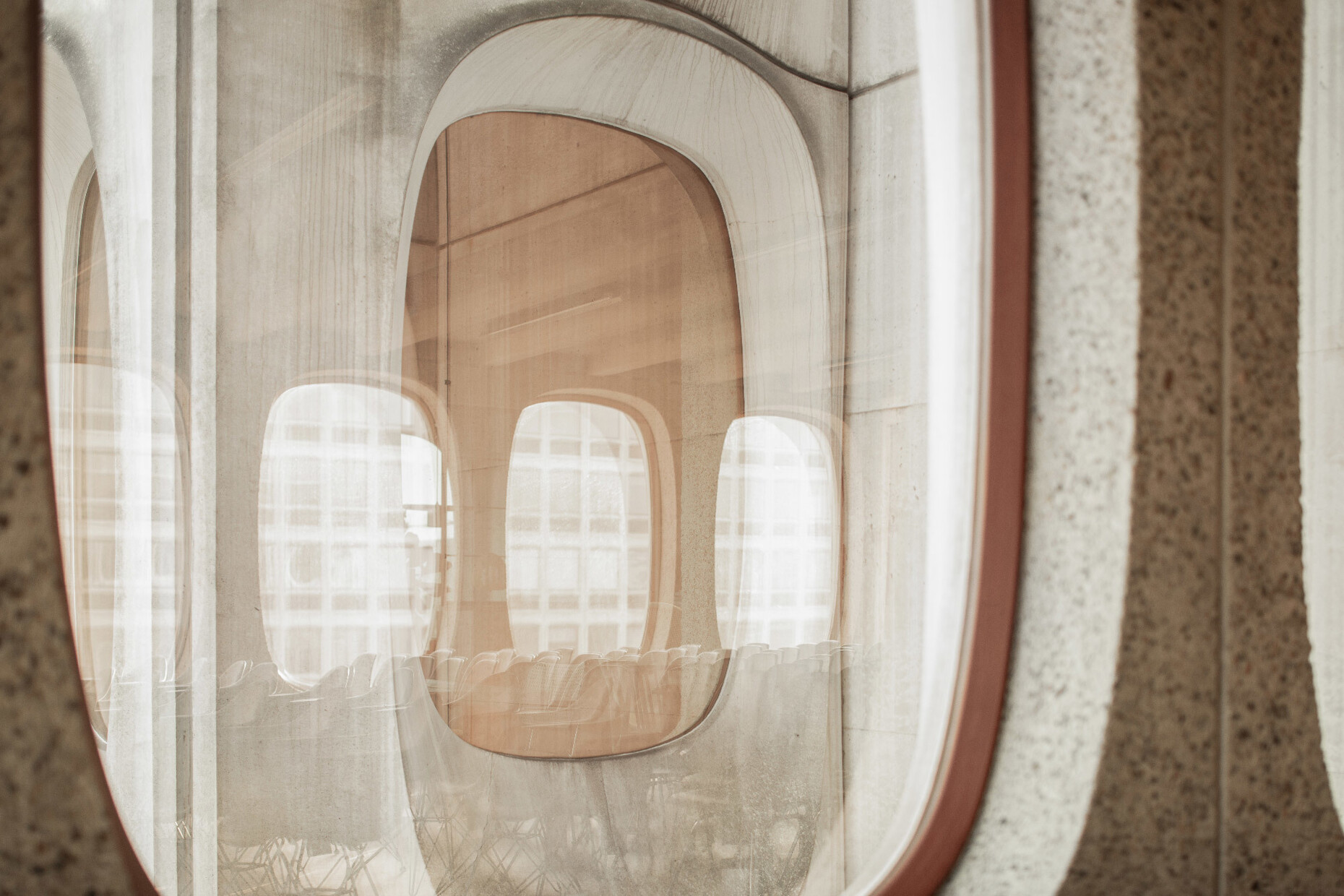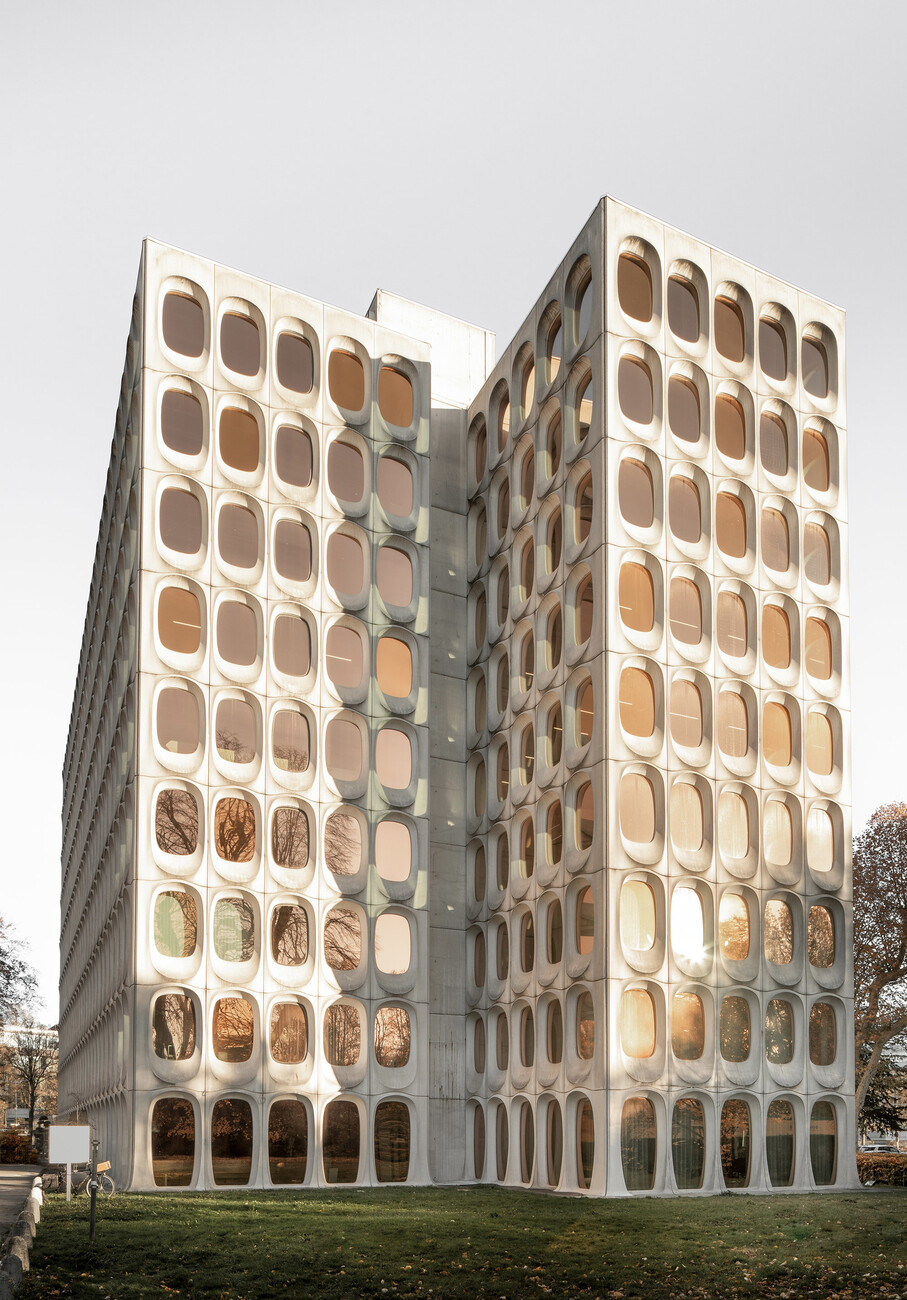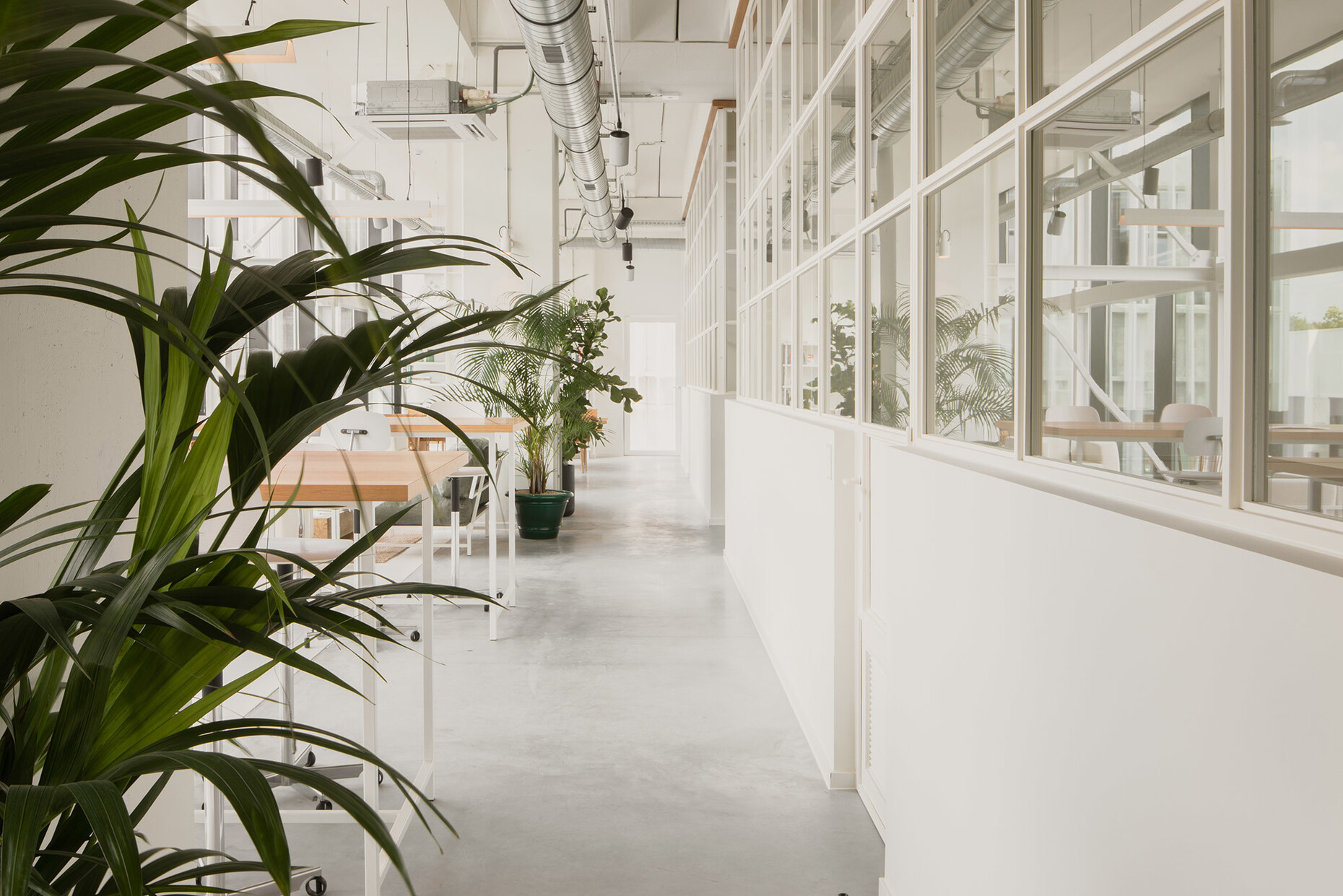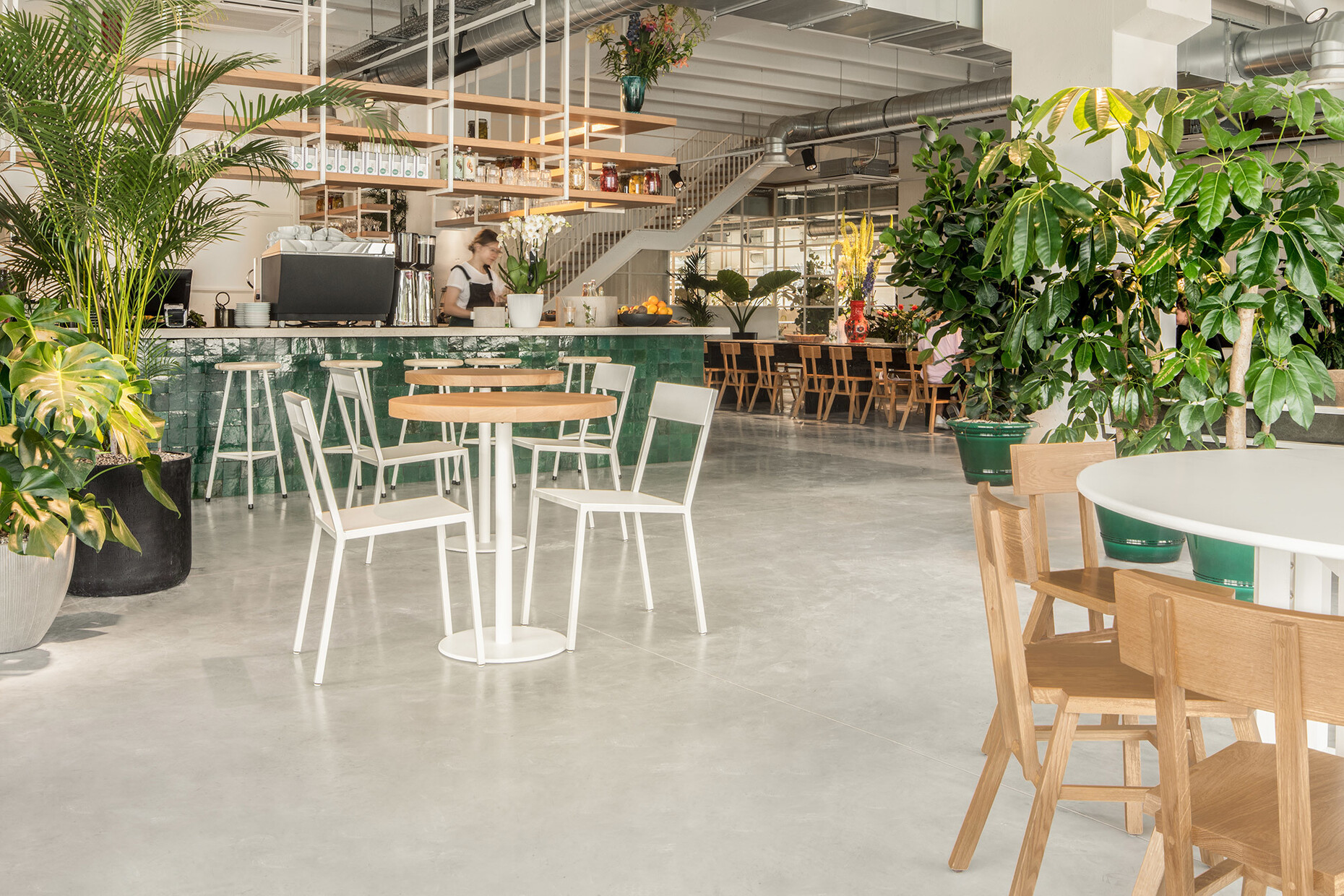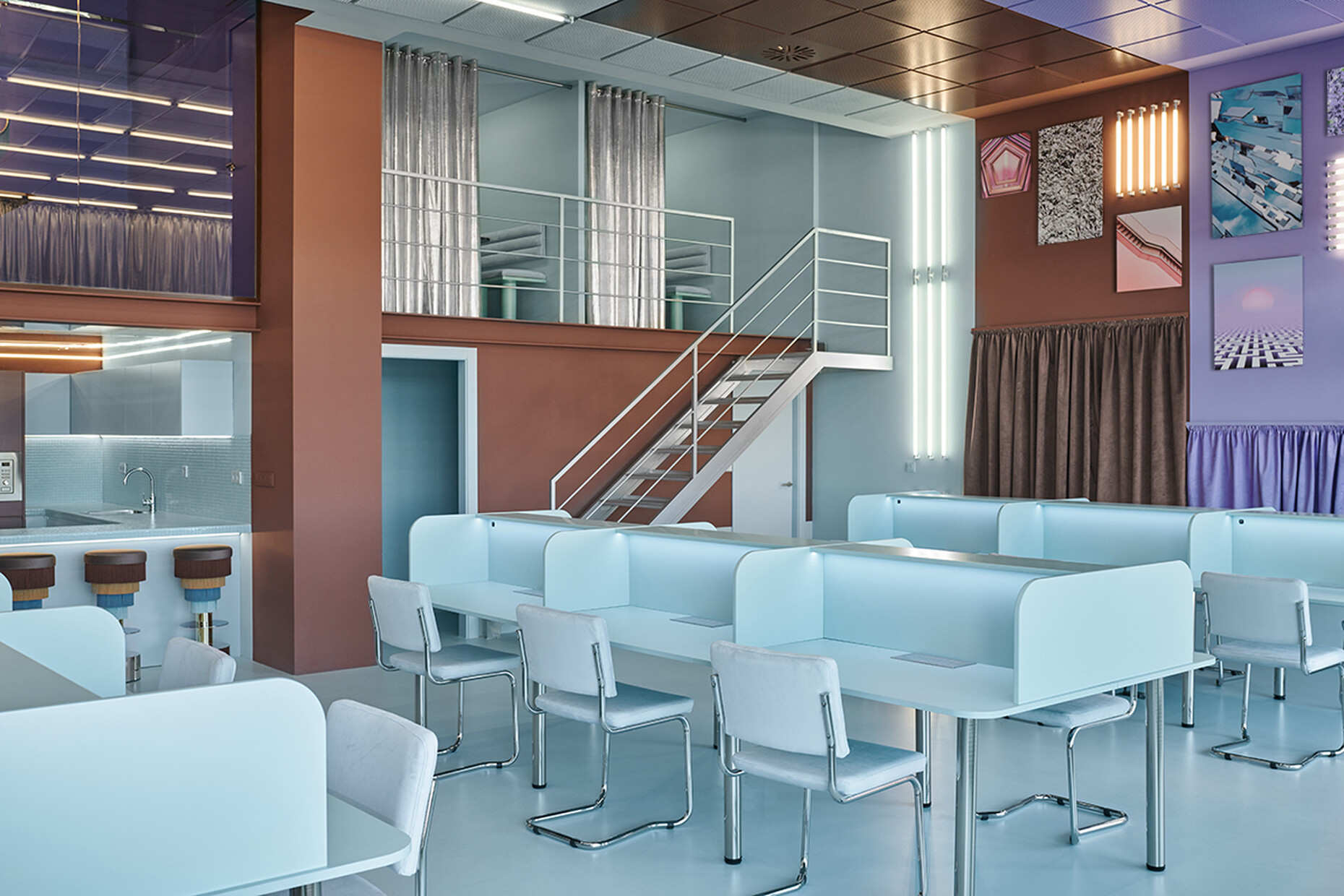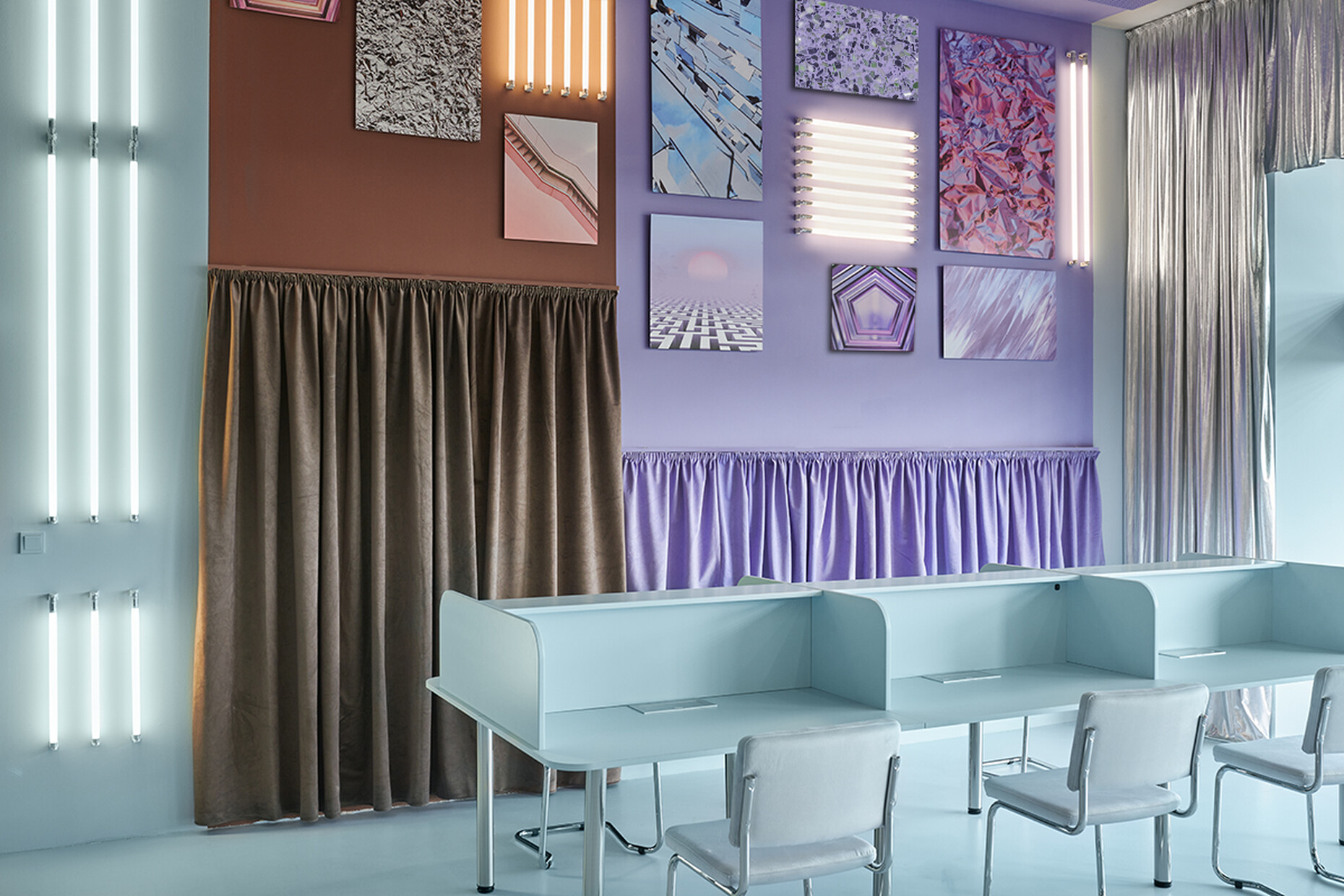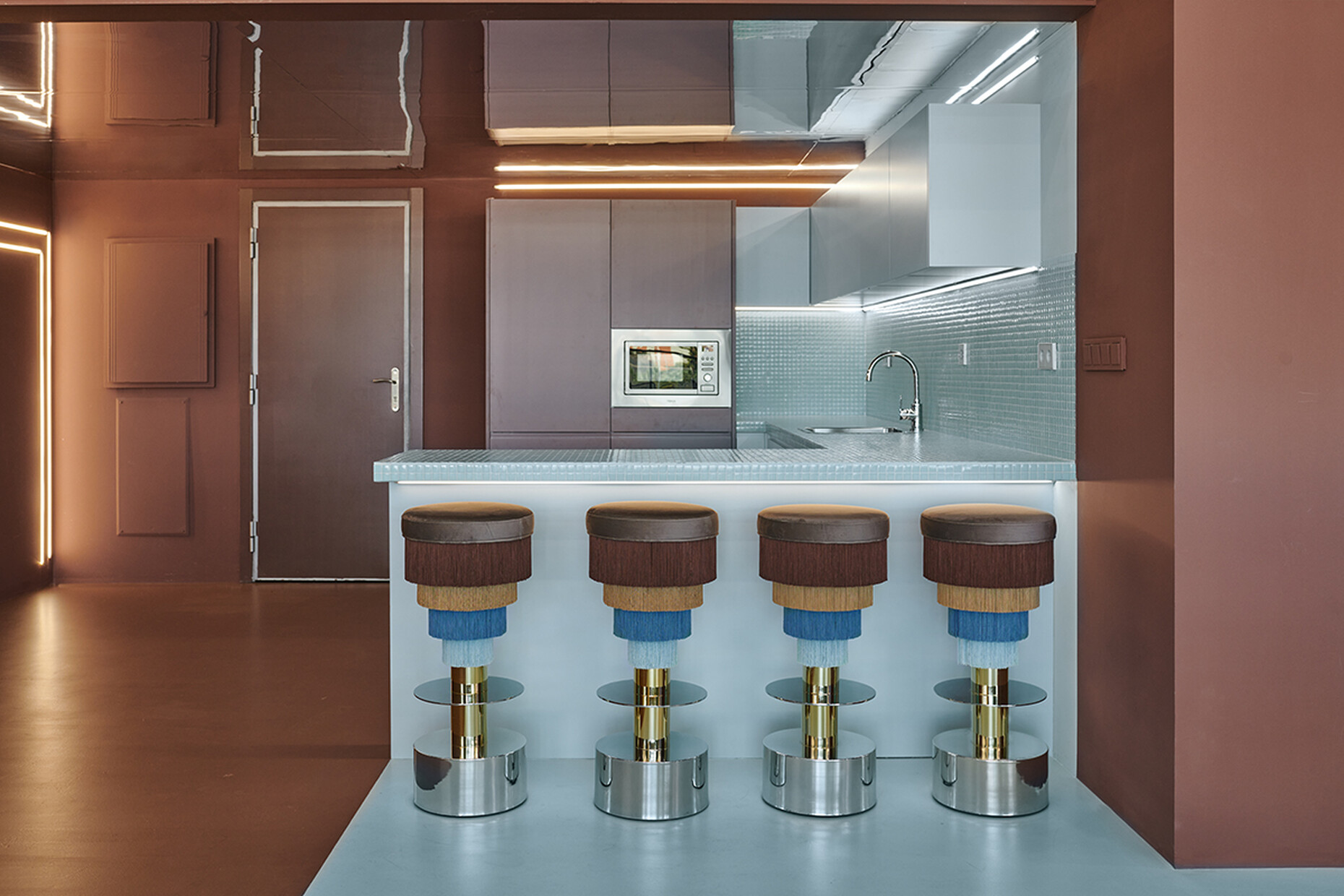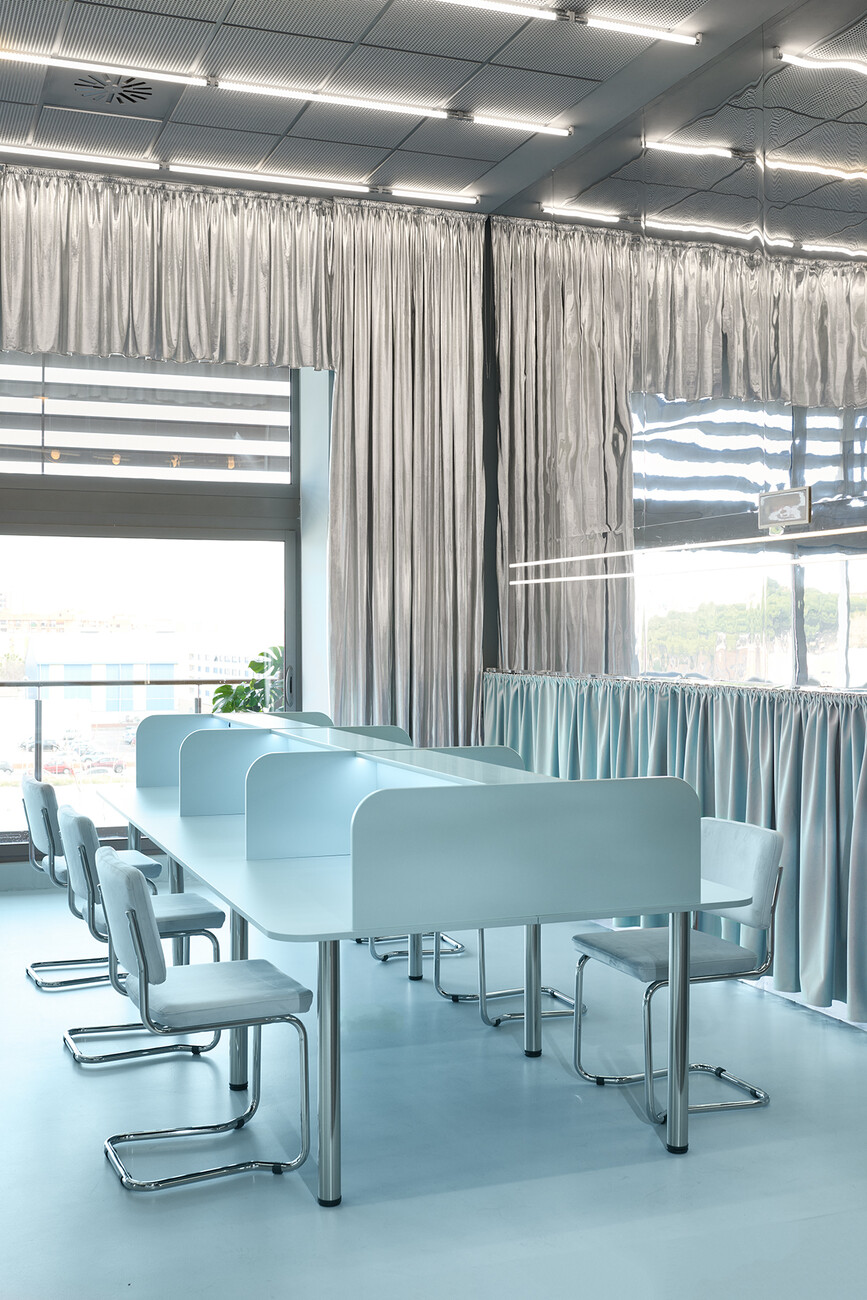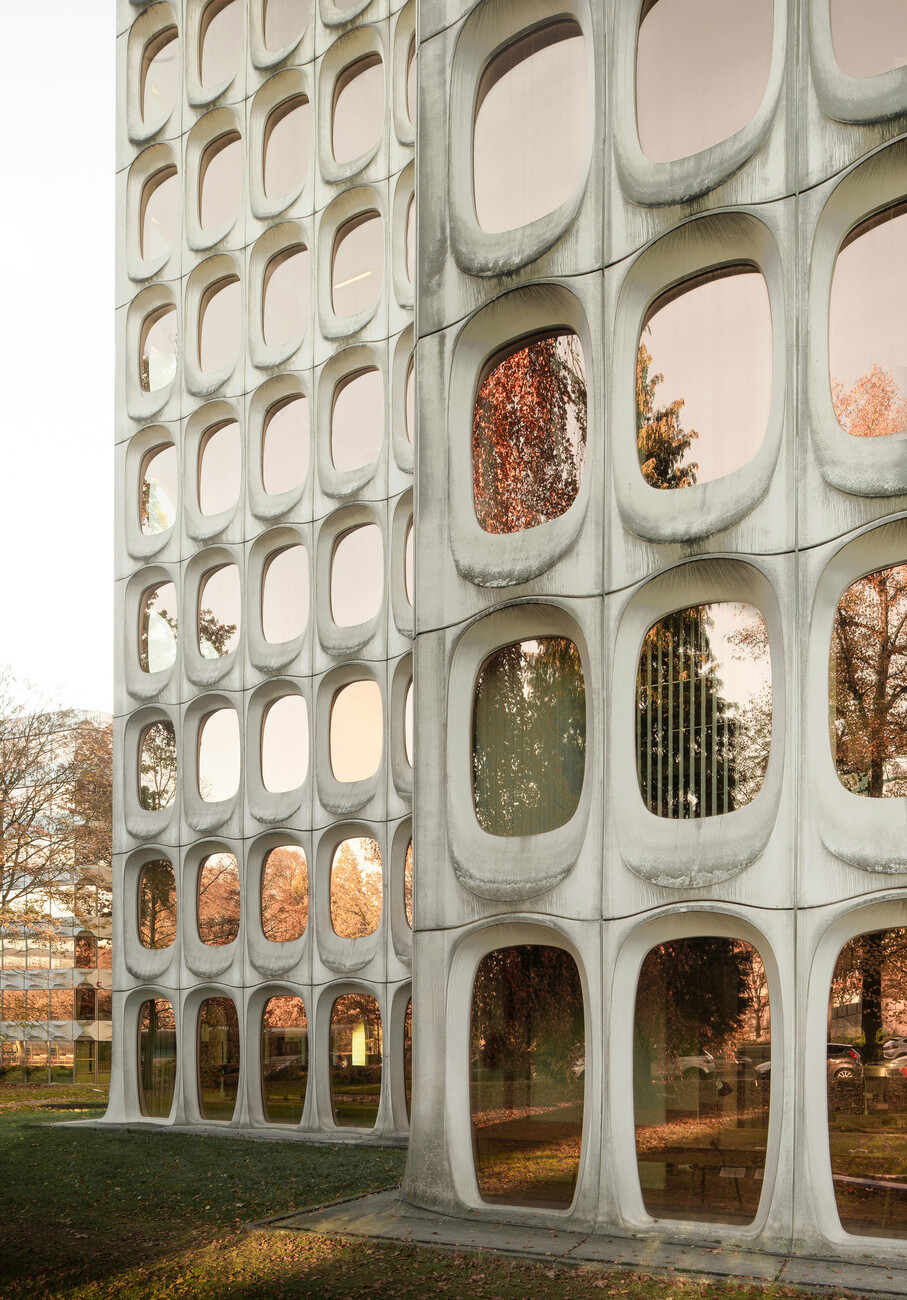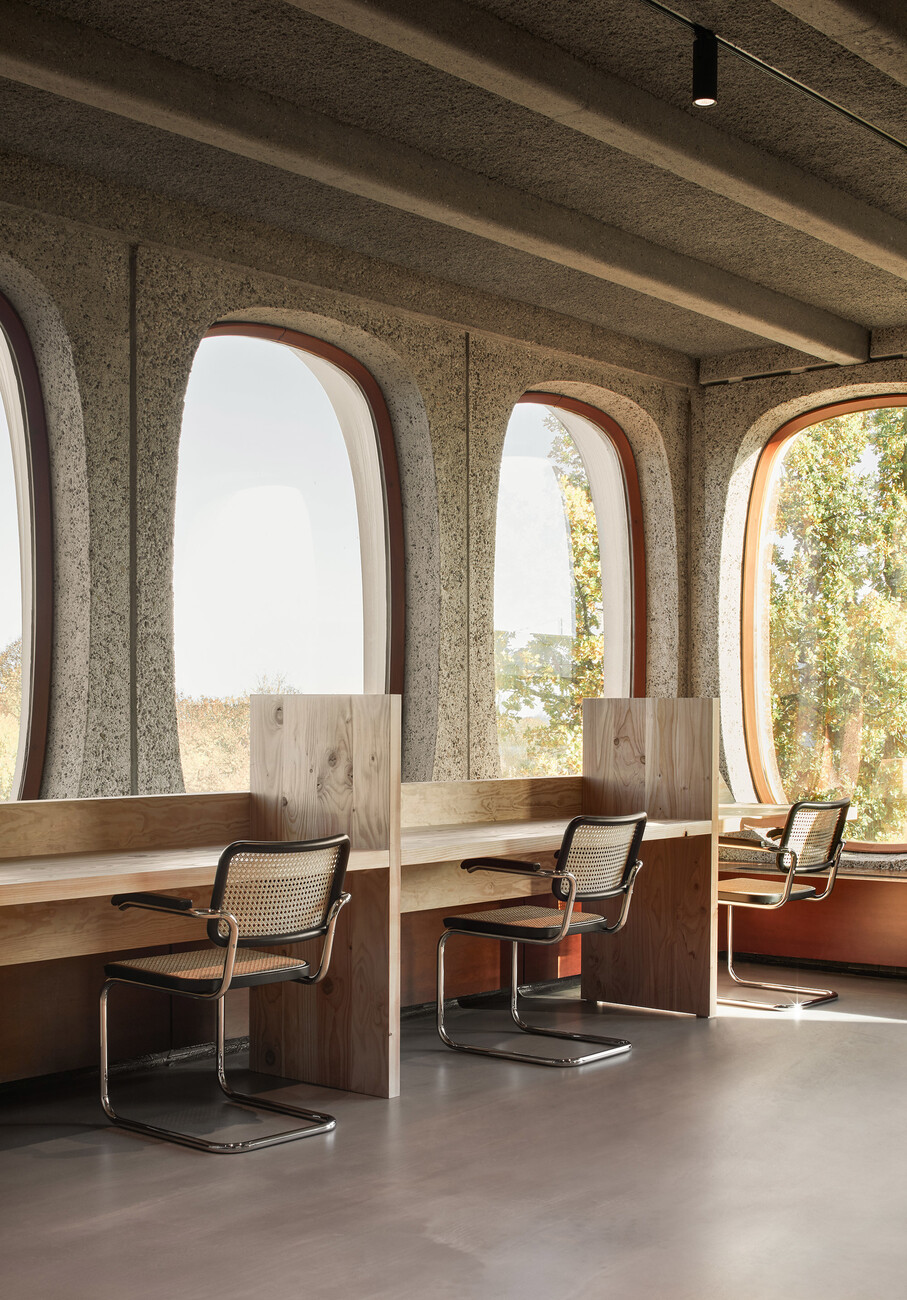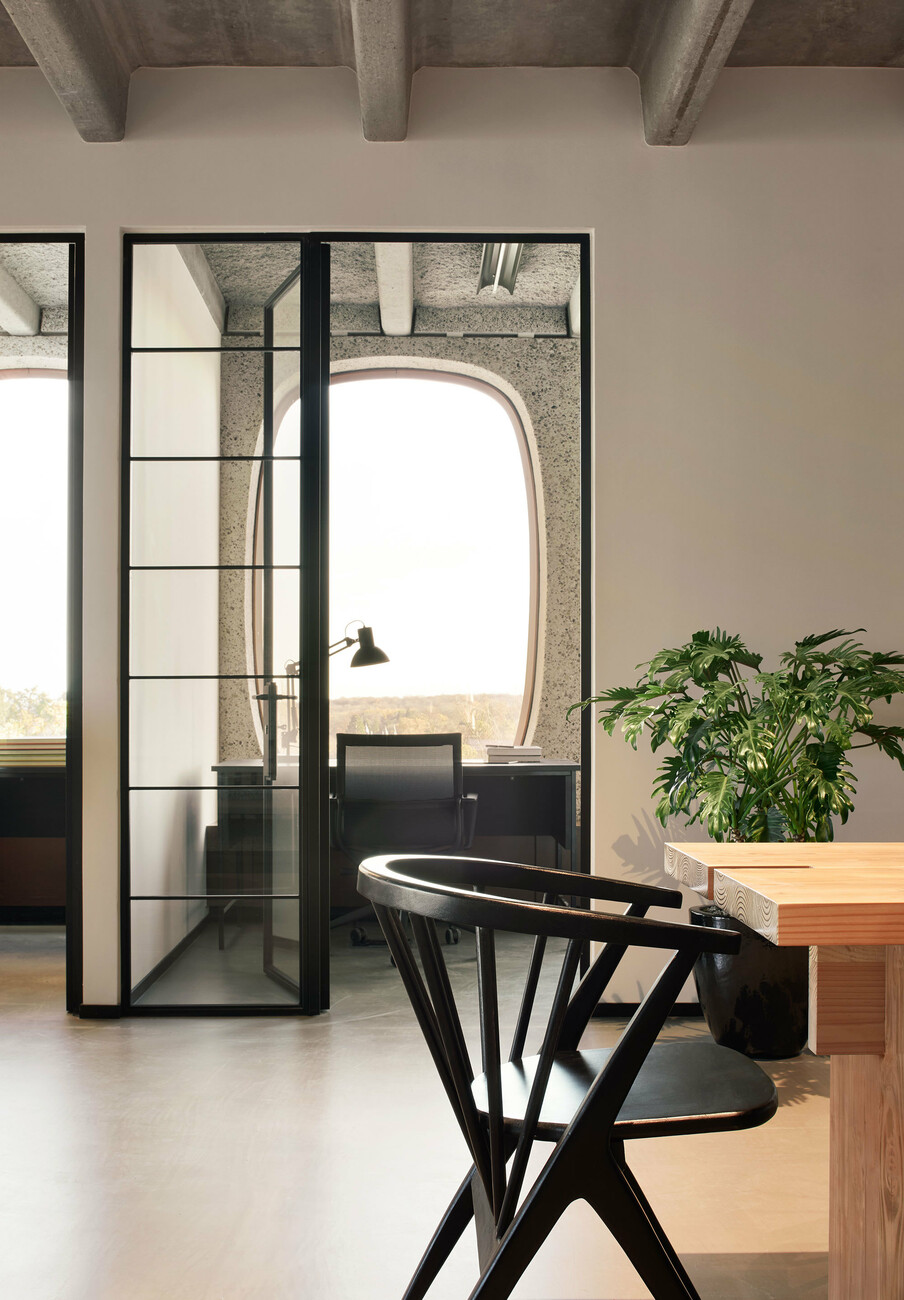STYLEPARK SIGEL
Working together
"In ten years’ time we will no longer call it coworking – we’ll just call it work," believes Tobias Kremkau, Head of Coworking at the legendary St. Oberholz. The COVID-19 pandemic has shown that a prediction like this could actually become a reality. More and more employees are coming to appreciate the advantages of flexible working and are busy trying out new routines: People remain creatures of habit, but habits change. Coworking has seen huge growth over the last few years and has become established worldwide in various forms. Coined as a term by the American programmer Bradley Neuberg in San Francisco back in 2005, coworking is defined as shared use of classic office structures offering highspeed internet, printers, mailboxes and coffee: Paramount here is the community. More precisely, the concept goes far beyond a physical location and places particular emphasis on the value of togetherness. Collaboration, openness, sustainability, community and accessibility are among the fundamental values of the coworking manifesto. Opening up a place to everybody, Ansgar Oberholz and Tobias Kremkau believe, is always the key to a location being perceived as something for everyone. "Coworking is a culture of togetherness, which is why, per se, it functions everywhere," says Kremkau.
From avantgarde to trend
These days, you can find coworking in towns and cities, in the country and at the main railway stations in Germany’s Deutsche Bahn network. There are offerings for employees and freelancers, as well as serviced coworking spaces for the staff of companies big and small. The avantgarde became a trend and the trend became the mainstream – with individual concepts for each target group. A tailored, inspiring design for so-called "corporate coworking" is the specialization of Design Offices, which boasts around 40 locations in 15 cities and thus represents a nationwide offering in this field. The mega-brand WeWork, which was founded in 2010, is aimed at global players such as Microsoft, Facebook and Samsung, and now operates in more than 800 locations globally, including ten serviced coworking spaces in Berlin alone. As with fitness studios, there are also special offerings aimed exclusively at women, like the American coworking chain The Wing. The Wing was launched in 2016 as a contemporary women’s club by New Yorkers Lauren Kassan and Audrey Gelman. Since then, the model has expanded, but has nevertheless had to defend itself time and again against accusations of discrimination and racism, and since March 2020 has been reinventing itself as "a whole new Wing" according to the website. This makes it one of only a few that have faltered in the coworking industry.
After all, demand is growing all the time. The basis for the coworking boom is the mantra of flexibility and efficiency. According to a questionnaire by the Research Center for Real Estate Business Management at TU Darmstadt, long, binding contracts and fixed office sizes no longer fit with the current requirements of office users and companies. Among the users of coworking spaces, the study identifies ever more larger companies, particularly from the areas of consultancy and IT, which feel at home in the coworking environment alongside freelancers and start-ups. The operators often benefit from good accessibility and are able to steer the success of their spaces through variable contract terms and design based on semi-open-plan layouts. Investors, meanwhile, generate added value for their real estate as a whole through the inclusion of flexible office spaces.
Work reinterpreted
Since Covid-19, all the signs in the world of work have been pointing irrefutably towards transformation and change. With coworking, "workations" and working from home, work has not only relocated, but is also being reinterpreted. The pandemic is thought to have enhanced these developments that have been taking shape for a while – albeit only faintly in some cases. Hence, while many people have been able to discover the advantages of working from home, the idea of coworking is also seeing a new boom. Precisely because the concept is so flexible, it makes it easier for companies and their employees to try out the possibilities and test them for a period of months, weeks or by the day – in full recognition of the fact that work can be different.
Another advantage of flexible workplaces is their tremendous adaptability. The stipulations of the SARS-CoV-2 occupational health regulations for protection from coronavirus in the workplace call for a safety distance of at least 1.5 meters between two workstations, which isn’t hard to implement in coworking spaces. Access and registration take place via app and members ensure regular ventilation and hand hygiene. Only the shared kitchen became a taboo zone during the lockdown. Lots of coworking spaces have indeed limited their capacities rather than closed – as was the case, for example, at the Belgian chain Fosbury & Sons, founded by Serge Hannecart, Stijn Geeraets and Maarten Van Gool. At their stylish locations in Brussels, Antwerp and Amsterdam, which they have been developing since 2016, permanent members have been allowed access to the facilities at all times. Here too, we see more and more demands coming from bigger companies that want to create a local hub for their employees, explains CEO Maarten Van Gool. Since the office spaces were thinned out appropriately, the interior design concept barely had to change – quite the contrary. Fosbury & Sons users now particularly value the cozy atmosphere of working together – the “lobby vibe”, as Van Gool puts it. “Even if people cannot sit close to one another, they still have a need to be around other people.” In order to work productively, members want to feel connected – otherwise they would choose to work from home. Broad thoroughfares make it possible.
Just like the movies in Valencia
One way that coworking can reposition itself in times of Covid-19 has been demonstrated by an unconventional, passionately executed example in Valencia. Having only opened in May 2020, Cabinette in La Fuensanta is already experiencing high demand. Stereotypes and clichés are not permitted here, since "sexy, lux and fun" is the motto reflected in the design of the interior. Developed in 2019 by the Spanish Studio Masquespacio, Cabinette was created as an inspiring place full of energy with a retro-futuristic look combining silver curtains and violet and chocolate-brown walls, which acts like a visual time machine linking up the late sixties and seventies with the present day. The designer duo Ana Milena Hernández Palacios and Christophe Penasse from Valencia furnished the 200-square-meter coworking space not with classic office furniture, but rather with their own designs: The Masquespacio chair models Déjà-Vu and Arco combine with the lights from Wink to create an ironic counterpoint to the monotony of sterile work environments, while the strict arrangement of the ice-blue desks at the work booths are reminiscent of Jacques Tati’s movie Playtime. "The space needs to be emotianal so the workers can be inspired and feel comfortable in the space," says Christophe Penasse with conviction. Given that Cabinette was originally supposed to open before the lockdown in February, the designers were able to update their concept. Dividing walls were put in place to isolate the workstations and create protected areas. With Cabinette, Palacios and Penasse have translated the concept of coworking into an unmistakable, artful backdrop that will undoubtedly be much-imitated in future.
Coworking in the jungle
"Biophilic design" is the term Spanish architects SelgasCano use to describe their concept for the collective work landscape at Second Home, where the focus is firmly on nature. The two creative entrepreneurs Sam Aldenton and Rohan Silva opened the first Second Home in London’s Spitalfields in 2014, and this was followed by others in Lisbon and Los Angeles. "After the lockdown, people realized that they really could work from anywhere," goes the feedback from the Mercado da Ribeira, which SelgasCano converted into a Second Home in 2017.
The latest branch in Hollywood, also designed by SelgasCano, is growing and flourishing: More than 6,500 trees and plants were planted in the coworking garden, while the architecture is similar to that of the preceding Second Home locations in Lisbon, London and Los Angeles. "We're lucky - half of the Second Home Hollywood is outdoors; our offices are all freestanding pods with fresh air pumped straight in from outdoors," reports Managing Director Rohan Silva. In contrast to those in other office buildings, the air filters are suitable for use in hospitals, and since the campus is flat there is no need for any lifts, he explains. "Even our desks are made of Corian - rather than wood – which is a material predominantly used in hospitals, because it's non-porous, so super easy to keep hygienically clean." Since the basis was there, the Second Home Hollywood didn’t have to add any "healthy features", Silva continues, adding that the place itself is simply a "healthy campus". Hence, during the Covid-19 pandemic a dozen new companies with around 100 new members could be moved into the space. Silva believes this is the best confirmation he could get that the investment was worthwhile.
Pioneers of new work
"Covid-19 is the storm that is blowing apart the world of knowledge workers. Coworking is in the eye of the storm," says Ansgar Oberholz who, together with his team, sits down every day afresh to consider how work can be more effectively designed to create a better and more fulfilled life. In his view, flexibilization of spaces and activation of locations will gain an entirely new significance, shifting away from the niche and becoming a major topic for the world of work as a whole. "Work takes place entirely locally and interconnectedly," says Oberholz. His vision? "Output will no longer be measured by time, but rather by results." The foundations were laid with the first location at Rosenthaler Platz in 2005. Alongside other coworking locations in Berlin, in 2018 St. Oberholz expanded to Frankfurt-Oder and in the autumn of 2020 opened a branch in the Babelsberg district of Potsdam. Both expansions are breathing life into empty, heritage-listed functional buildings of East German Modernism with future-oriented concepts. The final adjustments are currently being made to the interior design of the Alte Post in Babelsberg. Because the building by the architect Wolfgang Müller has been under a preservation order since 2009, the Berlin Modiste Design Studio is in close dialogue with the preservation authority for the extension of the coffee and lobby area. The expansion of the coworking areas is also being supervised by the architect Astrid Pankrath.
In Frankfurt/Oder on the German-Polish border, the St. Oberholz with its BLOK O coworking space has already proved to be a good neighbor. The underlying concept sounds like an extraordinary experiment: It combines a bank branch, a café and coworking, so everyone here, including the bank staff, work together without a permanent desk. The project was initiated by a collaboration with Sparda Bank Berlin. It works because this is a cooperative and regional bank whose values align with those of coworking, explains Tobias Kremkau, who supervised BLOK O as project manager from the initial idea through to the opening. "The bank bows to the principle of coworking," he says, quoting the Sparda Bank Berlin executive board. Alongside students revising for their exams, it is primarily medium-sized companies recently established in Frankfurt that rent space here. After all, there is plenty of empty commercial property, explains Kremkau, but it is in a dilapidated state. "We have actually contributed to economic growth." Meanwhile, there is now a second coworking space in the city, and others will follow. For the pioneers things are continuing just as they began 15 years ago. "The property at Rosenthaler Platz in Berlin was empty for two years; no one wanted to do anything with it in 2005. After German Reunification, the turn-of-the-century building was home to the first Burger King on East German soil, but it had to relocate. The area around Hackescher Markt became the cool part of Berlin. We go where no one else wants to."
Whether it’s a flexible provisional solution, an elegant retreat, an urban lounge in the jungle or a creative hub with up-to-the-minute office amenities: 15 years of coworking have shown that the new places of creative working have long also been influencing work processes in general.







